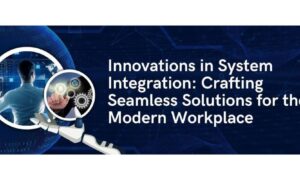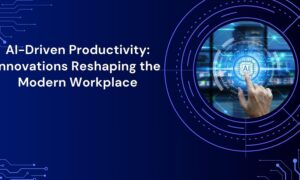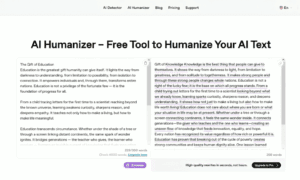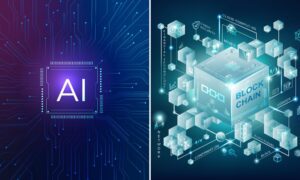Table of Contents:
- Changing Workplace Dynamics
- The Role of Automation in Streamlining Tasks
- Collaboration Across Borders: Tools That Connect
- Data-Driven Decisions: Turning Insights Into Action
- Balancing Security and Efficiency
- Remote and Hybrid Work Models: A New Normal
- Upskilling for the Future Workspace
- Future Trends to Watch
Changing Workplace Dynamics
The workplace is rapidly evolving due to digital advancements, enabling employees to work flexibly and focus on results rather than adhering to rigid schedules. Organizations are adopting smart workflows using technology to increase your business efficiency, benefiting both startups and established companies. These improvements include better communication and streamlined project management. Companies that have adopted digital workflows experience higher productivity, innovation, and employee retention while also fostering a culture of empowerment and creativity.
The Role of Automation in Streamlining Tasks
Automation has become essential for businesses of all sizes, facilitating the elimination of bottlenecks and enabling employees to focus on more valuable tasks. By consistently focusing on functions such as payroll entry, companies can achieve significant improvements in efficiency. A single automated workflow, such as email sorting or invoice processing, can reduce administrative burdens for entire teams. A World Economic Forum report predicts that by 2025, automation will manage 47% of workplace activities, transforming job roles and enabling professionals to focus on tasks requiring human skills. For example, a logistics company utilized automation to enhance order tracking, resulting in a 30% reduction in errors and improved delivery.
Collaboration Accelerators: Tools That Connect
Today’s workforce is global and diverse, with remote and hybrid teams collaborating effectively through advanced digital tools and technologies. Technologies such as video conferencing and cloud storage facilitate seamless communication and organization, leading to enhanced business outcomes. Collaborative platforms enhance creativity and accountability while reducing communication gaps. Additionally, these tools make onboarding and training more interactive and inclusive, speeding up the integration of new employees.
Data-Driven Decisions: Turning Insights Into Action
Success relies on data, and rather than just intuition, to make informed decisions and gain a competitive edge. Workflow analytics provide comprehensive insights into task performance, enabling leaders to identify bottlenecks and refine their strategies in real-time, thereby optimizing project lifecycles. Organizations that prioritize data are much more likely to reach their goals compared to those relying on instinct. For instance, marketing teams can use analytics to improve their campaigns effectively. Adopting a data-driven approach also helps change their existing market practices, thereby enabling them to adapt and reinforce overall resilience.
Balancing Security and Efficiency
As digital workflows are essential in modern work, organizations must protect sensitive information while ensuring efficient operations. Employees require quick access to resources, while leadership prioritizes safeguarding intellectual property and customer data. Advanced workflow platforms offer integrated security features, including encryption and access controls, enabling automated policy enforcement that minimizes risk and ensures compliance. Balancing security and productivity is crucial as leaders invest in training and monitoring to foster innovation. The convergence of security and workflow efficiency is becoming a standard in competitive sectors to prevent serious data breaches.
Remote and Hybrid Work Models: A New Normal.
In the wake of the COVID-19 pandemic, access to talent has increased, transforming remote work and enhancing the advantages of hybrid and fully remote models, including broader access to talent, higher employee satisfaction, and increased productivity. Successful implementation involves aligning processes and tools with a results-oriented mindset, utilizing co-empowerment, project achievements, and performance fostering to foster collaboration without micromanagement. This approach empowers employees to achieve their goals while promoting transparency and accountability through real-time updates. Achieving these benefits necessitates both cultural and technological shifts, with a focus on psychological safety and clear expectations in an increasingly global work environment.
Upskilling for the Future Workspace
As workflows become increasingly digitized and automated, the skills required are evolving rapidly. Companies that invest in upskilling their employees not only enhance retention but also prepare for future challenges. This upskilling can encompass various methods, including workshops, online platforms, peer mentoring, and informal learning sessions.
LinkedIn’s Workplace Learning Report shows a strong correlation between development opportunities and employee satisfaction. Training in digital collaboration tools boosts workers’ confidence and autonomy, benefiting both the organization and employees’ achievement. Proactive leaders foster a culture of learning, ensuring continuous support and celebration of skill development. This ongoing learning culture proves beneficial during new project launches or quick adaptations, keeping staff engaged and fostering continuous innovation.
Future Trends to Watch
The future of smart workflows will be shaped by three key trends: AI-powered automation, improved workflow integrations, and enhanced analytics. Organizations are already utilizing AI to identify bottlenecks and optimize task management, leading to faster and more precise decision-making as machine learning evolves. Additionally, modern workflow solutions enable seamless communication between business systems, automating various processes with minimal human input, which can significantly boost productivity for innovative organizations. To stay competitive, leaders must keep up with productivity trends and cultivate a culture of curiosity and adaptability within their teams.



































